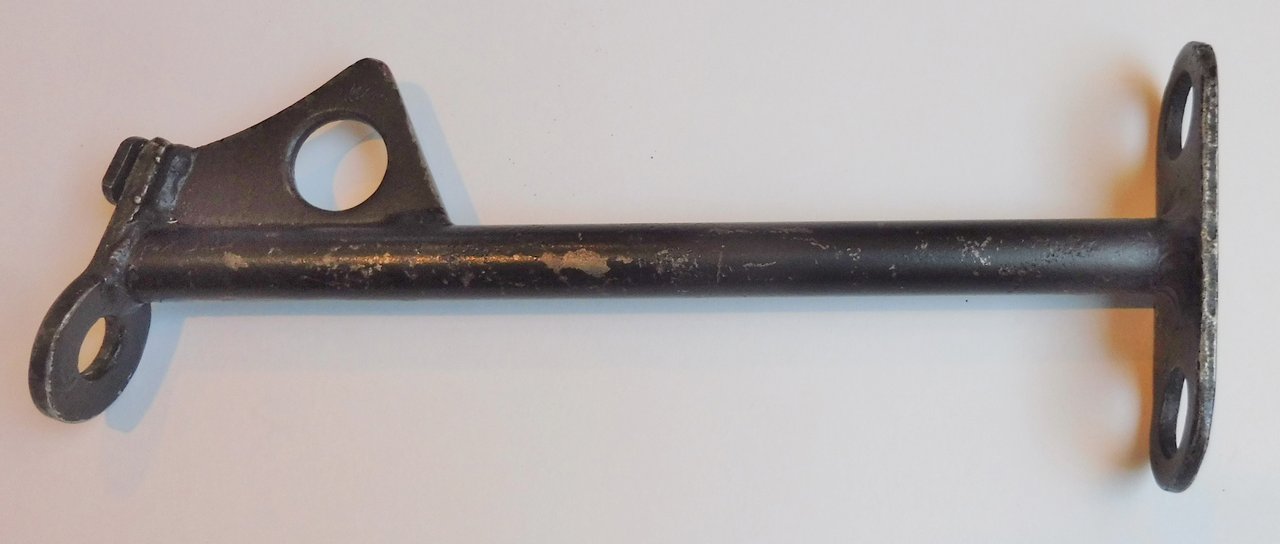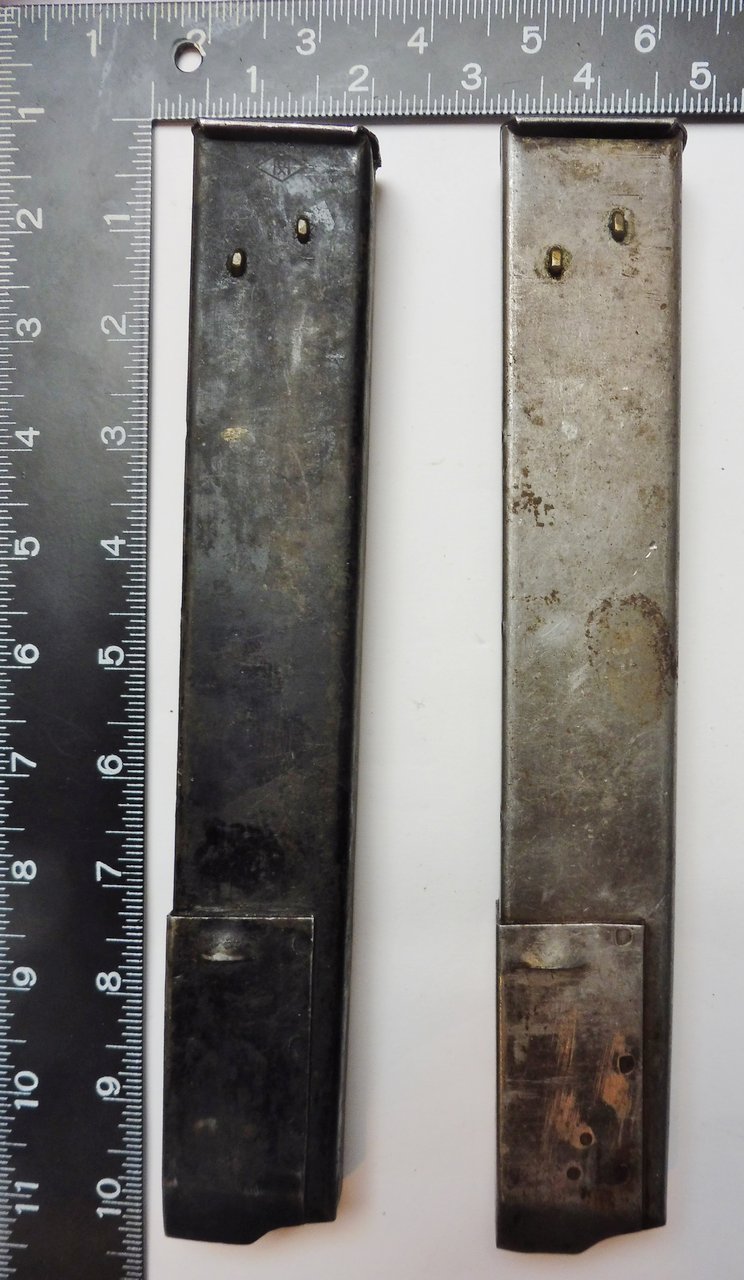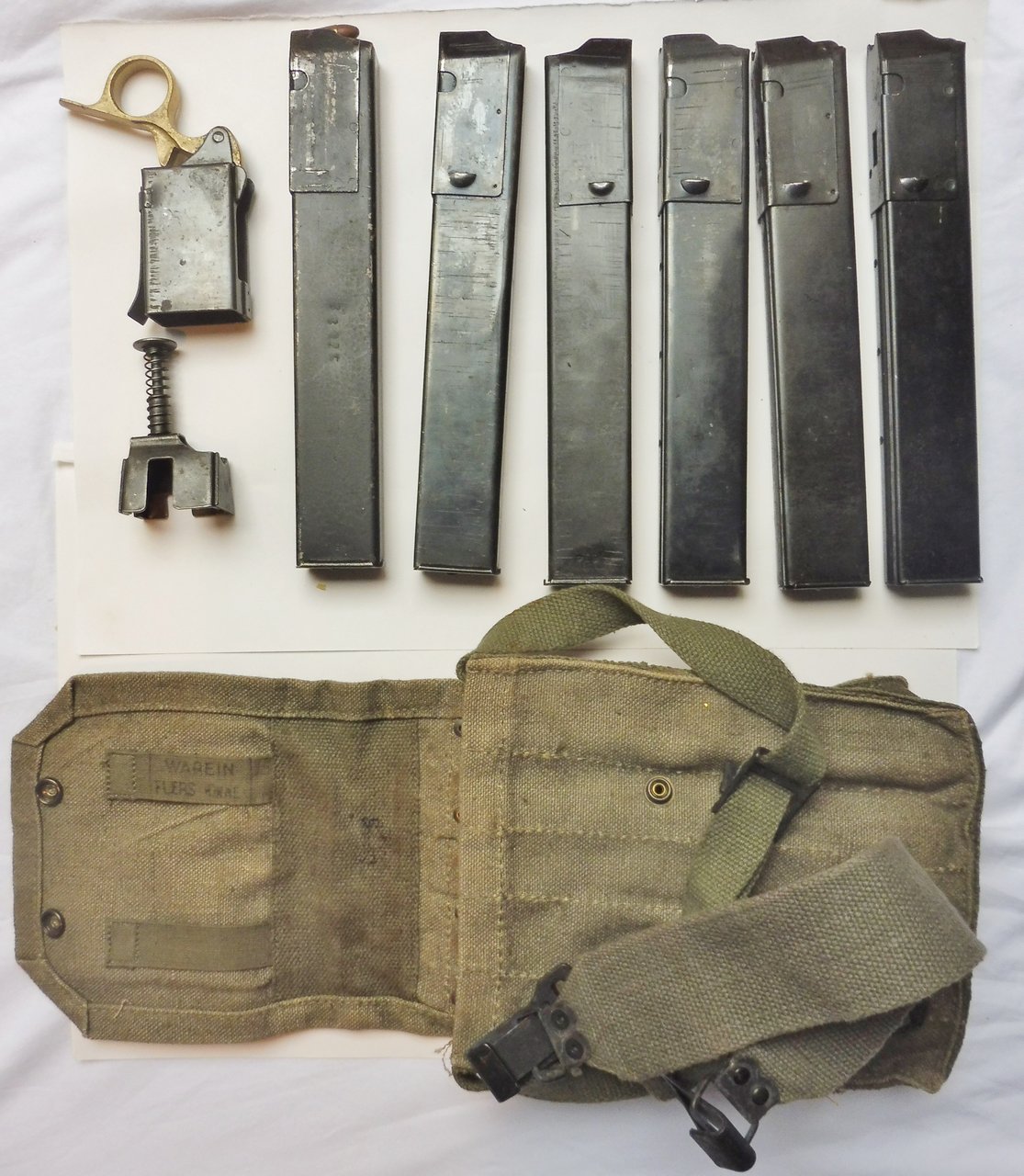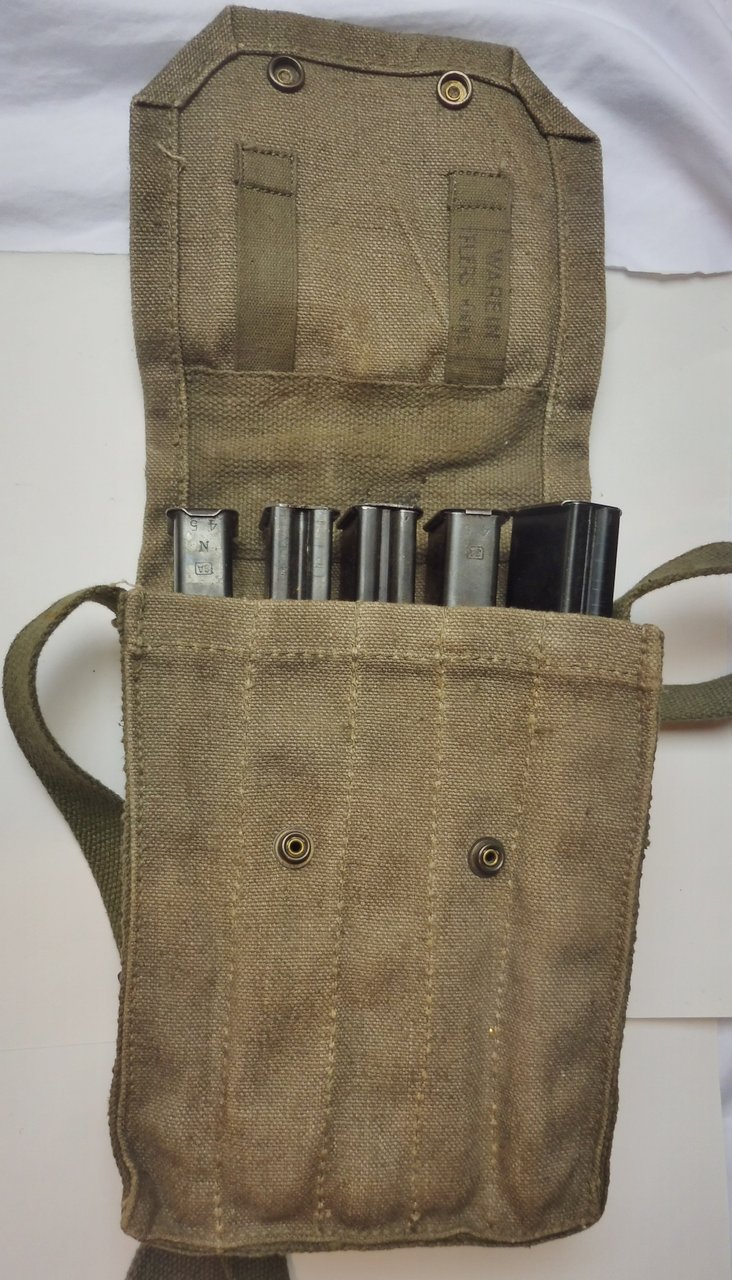Sten Gun – a 9mm sub-machinegun (called 'machine carbines' in the UK) that was mass produced to be cheap and easy to manufacture. It operated from an open bolt using a blowback system, held a 32-round magazine and over 4 million were produced.
In 1940, the UK desperately needed a sub-machinegun, not having an indigenous example and so while the Government ordered Thompson SMGs from the United States, the Royal Air Force decided to adopt an SMG (for airfield defence), quickly followed by the Admiraly. The resultant design was named the Lanchester, after George Lanchester of the Sterling Armaments Company of Dagenham and was a direct copy of the German MP28 Bergmann. As it turned out, only the Admiralty would receive the weapon, as a design for a new SMG appeared, one which was adopted by the Army and the Air Force.
This design was conceived by Major Reginald V. Shepherd and Mr Harry J. Turpin of the Royal Small Arms Factory (RSAF) Enfield and first fired on 10 January 1941. The prototypes were made by Major Hearn-Cooper. It was a relatively simple piece of kit, being a blowback-operated sub-machinegun, firing from an open bolt with a fixed firing pin on the face of the bolt. This means that the bolt remains to the rear when the weapon is cocked and on pulling the trigger, the bolt flies forward under pressure from the spring, stripping a round from the magazine to feed into the chamber which is immediately fired, all in the same action. It has no breech locking mechanism; the rearward movement of the bolt is attenuated only by the main spring and the inertia of the bolt. The basic operating principles are similar to those found on many other weapons and like these weapons it shared a number of advantages and disadvantages in that it was relatively cheap and simple to manufacture and put a significant amount of short range firepower in the hands of the infantry. The use of the open bolt and pistol ammunition limited effective range however to around 100m.
The weapon was very quickly given the name 'STEN', the word being an acronym of 'S' from Shepherd, 'T' from Turpin and 'EN' from either Enfield (where RSAF was located) or England, depending on which source is consulted. The first ever STEN Mk. 1 was hand-made at the Philco Radio Works (part of the multi-national Philips Radio Co. based in Eindhoven, Holland) at Perivale, Middlesex in December 1940, and is held by the Infantry Weapons Collection, Infantry and Small Arms School Corps, Warminster. It had a conical flash hider and a fine finish, as well as a wooden foregrip, forward handle and part of the stock was wood as well. The prototypes had the butt stock made from rectangular section strip with two-sided wooden grips retained together by wood screws, heads to the right. The forty-six pilot models made at RSAF Enfield used the same stock. It had a vertical strip behind the grip plates to attach the rifle sling. The production guns used the 2 tubes and a flat butt plate, again with a vertical bar behind the grip area for mounting a rifle sling. The barrel jacket (sleeve) had four rows of eight holes. After production started, the Mk. 1* emerged, this being the first simplification, with the foregrip, the wooden furniture and the flash hider being deleted to ease production. Captured examples of the Mk. 1 and 1* were designated the MP.748(e) in German service and around 300,000 were made by Singer Manufacturing Co. in Scotland.




